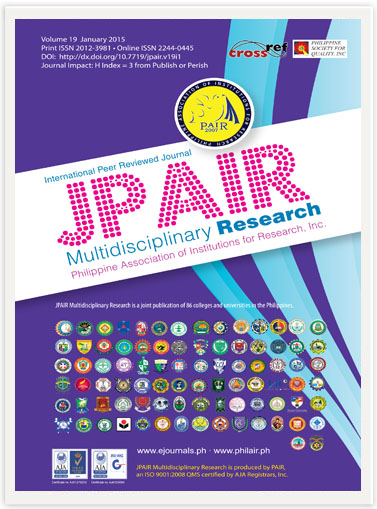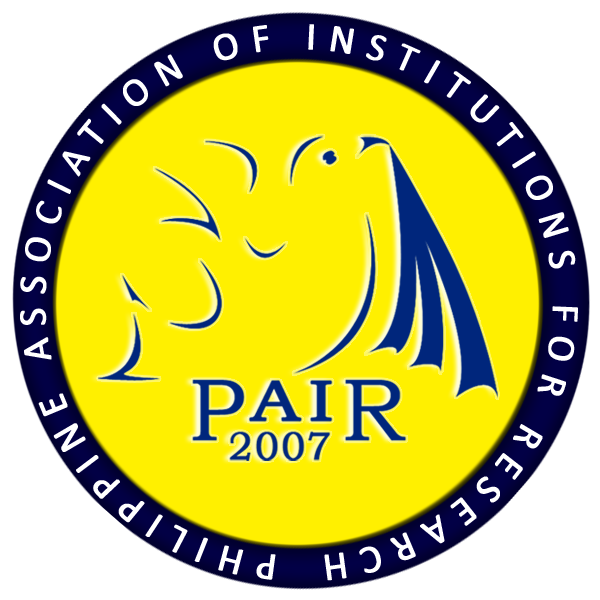Contrastive Analysis on Ilokano and English Personal Pronouns
DOI:
https://doi.org/10.7719/jpair.v19i1.313Keywords:
Linguistics, contrastive analysis, Ilokano personal pronouns, descriptive-ethnographic design, Batac City, Marawi City PhilippinesAbstract
Pairwise scientific description of foreign and native languages can predict and describe the patterns that may cause learning difficulties. This study explored the descriptions of Ilokano personal pronouns in parallel with English and the contrastive structure in these two languages in which personal pronouns occur. Using descriptive-ethnographic research design, data were gathered from an informant who substantiated the categorized personal pronouns obtained from reliable materials. Results showed that Ilokano personal pronouns are structurally independent and incorporated into other parts of speech as suffixes. Contrastive analysis further found that Ilokano personal pronouns present special characteristics which differ significantly to their English counterparts. Firstly, Ilokano personal pronouns provide speakers with respectful forms of address in various contexts which is absent in English. Secondly, Ilokano pronoun suffixes -ak, -ko, and -k are applied to all tenses and moods while English personal pronouns take the free morpheme in all cases. Thirdly, the Ilokano subject affects the verb form and the object suffix whereas English verb structure remains unchanged except for the third person singular and the object pronoun. Lastly, pronouns are common to all genders in Ilokano while this matters in English. Thus, Ilokano and English personal pronouns manifest parallel characteristics but have distinct differences in some aspects.
Downloads
References
Beckner, C., Blythe, R., Bybee, J., Christiansen, M. H., Croft, W., Ellis, N. C., Holland, J., Ke, J., Larsen-Freeman, D., & Schoenemann, T. (2009), Language Is a Complex Adaptive System: Position Paper. Language Learning, 59, 1–26. doi: 10.1111/j.1467-9922.2009.00533.x
Downloads
Published
Issue
Section
License
Copyright (c) 2015 Rommel V. Tabula, Constante S. Salasac

This work is licensed under a Creative Commons Attribution-NonCommercial 4.0 International License.
Open Access. This article published by JPAIR Multidisciplinary Research is licensed under a Creative Commons Attribution-Noncommercial 4.0 International (CC BY-NC 4.0). You are free to share (copy and redistribute the material in any medium or format) and adapt (remix, transform, and build upon the material). Under the following terms, you must give appropriate credit, provide a link to the license, and indicate if changes were made. You may do so in any reasonable manner, but not in any way that suggests the licensor endorses you or your use. You may not use the material for commercial purposes.





















